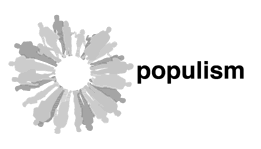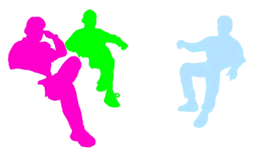Mindaugas Lukosaitis
To rephrase M. McLuhan, we can maintain that media of resistance as coexistence with hostile environment and its message is resistance itself. Specific protagonists are not dispensable for resistance (visual, style, armed, etc.) as symbolic activities.
In case of Lithuanian Resistance, partisans that defended local identities of space and culture resisted expansive nomadic Soviet imperialism with old-fashioned weapons left by armies that had been ravaging Lithuania. After the World War II, the Resistance Army that used to hide inside the woods and underground bunkers had been fighting the world’s biggest superpower for an entire decade.
Eventually, anachronistic attention of the reborn Lithuanian state and nation to the Resistance that took place fifty years ago and its participants generates a source of tension between two different conditions of statehood: heroic resistance during occupation and contemporary national liberalism. The lack of authentic images of fights could be explained by deeply conspiratorial and provincial character of the Resistance; similarly, this is the reason why the Resistance is represented as hyper heroic in the era of digital images. According to J. Baudrillard, image comes first and adds frisson to historical reality.
No doubt, relation between reality and fiction, reality and image is intangible. In the world jam-packed with images and information, the difference between spectacular and symbolic is impossible to conceive. Visual media melt always-obscure concepts of an aggressor and a resistant down, thus balancing the effects of violence and imagination. Specific historical dramas turn into imaginative spectacles, inspirational theme park for creative activities. Imaginative “illustrations” of reality are aggressive towards historical reality. Historical reality is deliquesced by images, because in them, everything is visible. Hyper visual images par excellence are made by means of every established method of creating propaganda image: shooting from above, “crucial moment”, suggestive composition and angles, sculptural monumentality, “Matrix” style special effects, etc. In the drawings by Mindaugas Lukosaitis, we see more than fighters of the Resistance saw; we see more than necessary; we see and enjoy the pleasure of seeing.
Works based on historical background function only if they evoke a pleasant déjà vu on us. Resistance message is revealed via easily recognizable collaboration forms.
By Valentinas Klimasauskas
"Resistance" (2004) (Pencil on paper)
Courtesy of the author.
|









